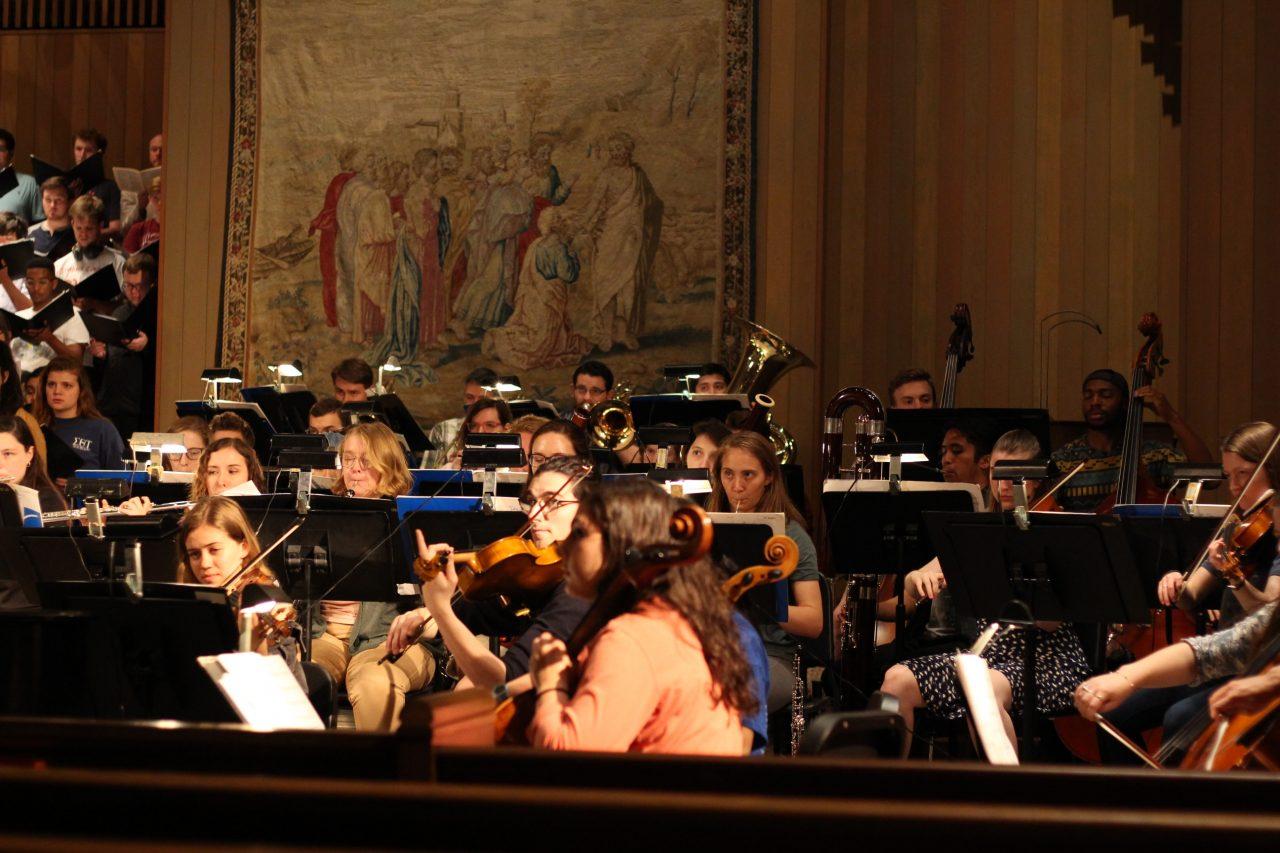photo by Mona Mirpour
Trinity Symphony Orchestra’s next concert is Choral Union, a partnership with the Combined Choirs that will be held in Parker Chapel on April 27 at 7:30 p.m. The lineup includes three soloists: piano faculty Carolyn True, soprano Lydia Beasley and me.
In April of 2018, I was lucky enough to compete in and win the second annual Trinity University Concerto Competition, the reward for which was the opportunity to perform my concerto with accompaniment from the orchestra. After over a year of waiting, the concert is mere days away. I’ll be performing alongside professional adult soloists, which is intimidating to say the least. I’m excited though, because I genuinely adore all three of the pieces we’ll be playing at this concert. To encourage attendance, I wanted to offer a layman’s guide to what makes this music so great.
My piece is the first movement of Édouard Lalo’s Cello Concerto in D Minor. Lalo was a Frenchman from the 19th century with a fantastic mustache and great skill with lush orchestration. His pursuit of music was against his father’s wishes, something I’m sure many Trinity students can relate to.
Lalo follows a declamatory opening line in the cello with passages of sweeter melody and moments of frenzied fast notes that have been the bane of my existence in the practice room. One of my favorite parts of the piece is when he brings the opening theme played by the orchestra as a whole back into the solo line of the cello about a third of the way through. The piece does a great job of tying back in every theme it presents, so it feels like a narrative arc.
The second piece on the program is Choral Fantasy, Op. 80 by Ludwig von Beethoven — a composer many will recognize. Beethoven was a turbulent man with wild ambition. The first time this piece was performed, it was part of a four-hour concert in a freezing church that included the premiere of his fourth and fifth symphonies. We as the orchestra are happy to be performing it in the even-temperatured chapel as part of a one-hour concert.
The piece, featuring the fabulous Carolyn True on piano, is a theme and variations. The same melodic line is manipulated and played multiple times throughout the piece, with each iteration becoming fresh and new through changes in what instruments are playing, the volume they play, the rhythms played and more. It has a slow-build of tension from the opening, which features the piano alone, to when the choir finally stands and sings with us through to the magnificent end that features six students from the choir singing independent lines.
The last piece on our program is Gloria by Francis Poulenc, another Frenchman. It’s completely unexpected and eccentric, especially for a religious work. It’s like no classical piece I’ve heard before, and I’ve heard a lot of them. In rehearsal, we keep comparing this piece to Star Wars, even though it was composed nearly two decades before the release of A New Hope. The orchestra and choir journey through six movements together, each strange and exultant in its own way.
Here’s my interpretation of this theatrical piece. In the first movement, I picture the reveal of an exciting but intimidating land that a naive hero has never seen before. In the second movement, we journey into a bustling marketplace or warehouse, full of industrious citizens. In the third movement, we finally get our talented soloist, Lydia Beasley. She sings a haunting line that makes me think of the opera scene in 1997 film “The Fifth Element,” which in turn borrows from a 19th century opera by composer Gaetano Donizetti. Halfway through, we get a moment that conductor Joseph Kneer compares to the moment in a movie when a being of ultimate power is revealed.
The fourth movement is a playful and energetic romp that reminds me of running children or prancing horses. In the fifth movement, our soloist returns for a slowly lilting melodic line with sections of both uplifting and eerie music in turn. Here, I could see a protagonist exploring an unfamiliar but not necessarily threatening new environment, like a cavern. The plucking in the stringed instruments is like careful footsteps. The sixth and final movement is the grandest of them all, relying heavily on differences in volume to create tension. We journey from joy to reverence until the soloist rejoins the choir, signifying that we have finally arrived at Poulenc’s idea of heaven.
Going into a concert with some idea of what’s about to happen is always helpful and encourages engagement with the music. It can be rough to put down your phone for awhile and listen to music that doesn’t sound like your perfectly curated Spotify playlist, but these pieces are worth it.
Being both a soloist and a member of the general orchestra, I know the amount of effort and care that goes into creating something this beautiful. Just like any athlete who wants fans in the stands, it is so validating as a musician to have listening ears in the audience, people who participate in the presentation of something so important and hard-won. Here’s hoping that I see another full house when I walk out to perform — and that I won’t faint from nerves when I do.







